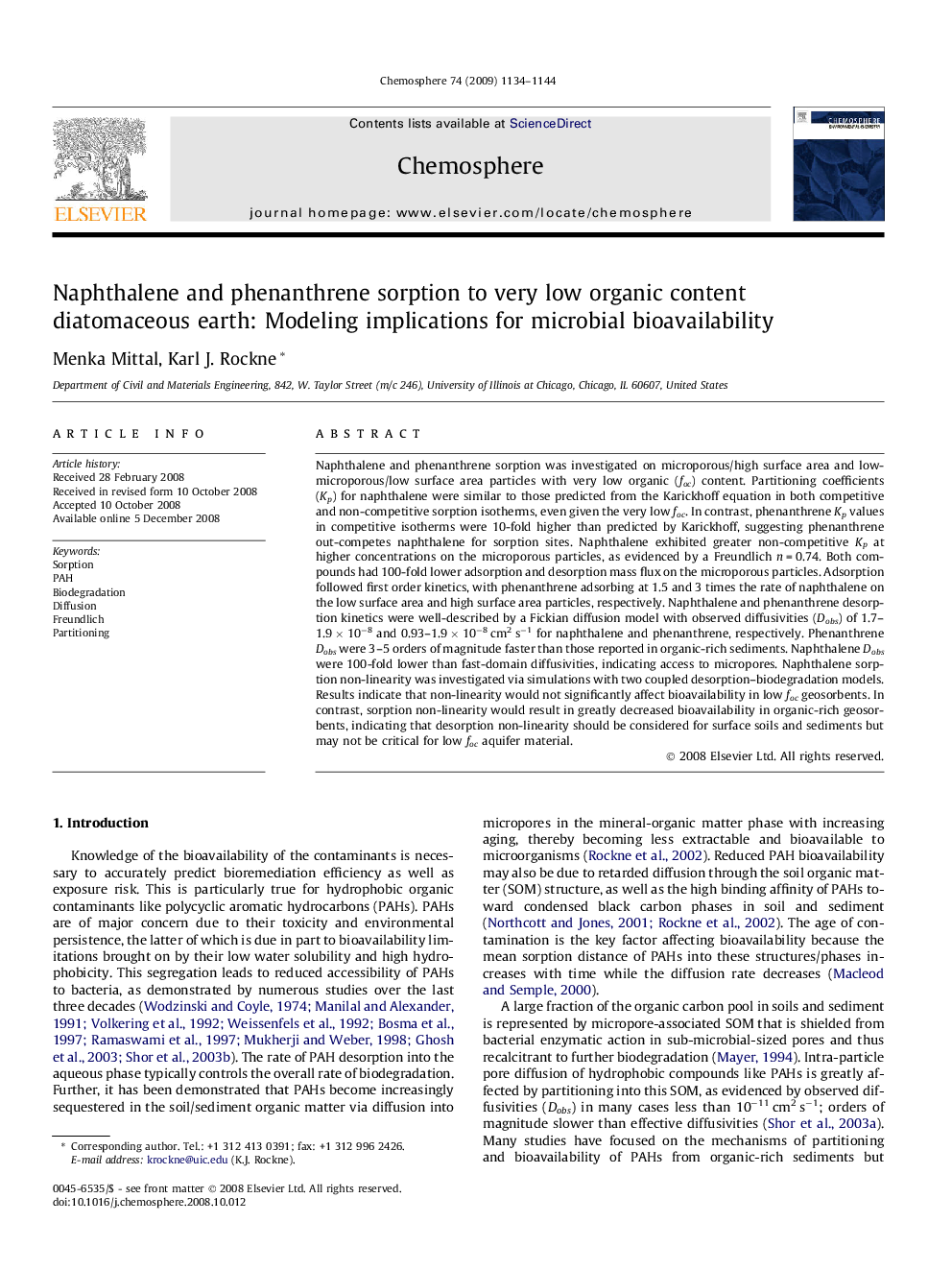| Article ID | Journal | Published Year | Pages | File Type |
|---|---|---|---|---|
| 4413274 | Chemosphere | 2009 | 11 Pages |
Naphthalene and phenanthrene sorption was investigated on microporous/high surface area and low-microporous/low surface area particles with very low organic (foc) content. Partitioning coefficients (Kp) for naphthalene were similar to those predicted from the Karickhoff equation in both competitive and non-competitive sorption isotherms, even given the very low foc. In contrast, phenanthrene Kp values in competitive isotherms were 10-fold higher than predicted by Karickhoff, suggesting phenanthrene out-competes naphthalene for sorption sites. Naphthalene exhibited greater non-competitive Kp at higher concentrations on the microporous particles, as evidenced by a Freundlich n = 0.74. Both compounds had 100-fold lower adsorption and desorption mass flux on the microporous particles. Adsorption followed first order kinetics, with phenanthrene adsorbing at 1.5 and 3 times the rate of naphthalene on the low surface area and high surface area particles, respectively. Naphthalene and phenanthrene desorption kinetics were well-described by a Fickian diffusion model with observed diffusivities (Dobs) of 1.7–1.9 × 10−8 and 0.93–1.9 × 10−8 cm2 s−1 for naphthalene and phenanthrene, respectively. Phenanthrene Dobs were 3–5 orders of magnitude faster than those reported in organic-rich sediments. Naphthalene Dobs were 100-fold lower than fast-domain diffusivities, indicating access to micropores. Naphthalene sorption non-linearity was investigated via simulations with two coupled desorption–biodegradation models. Results indicate that non-linearity would not significantly affect bioavailability in low foc geosorbents. In contrast, sorption non-linearity would result in greatly decreased bioavailability in organic-rich geosorbents, indicating that desorption non-linearity should be considered for surface soils and sediments but may not be critical for low foc aquifer material.
